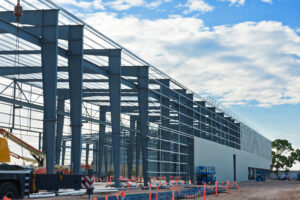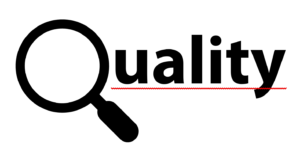 The last nine months have seen a complete re-evaluation of the risks inherent in global pharma supply chains. COVID-19 forced a doubletake in C-suites, but concern was already well on the rise. And while politicians the world over have focused on ‘bringing drug-making back home,’ the industry as a whole has been busy considering key mitigation strategies to avoid disruptions and shortages both in the near-term as well as strategically.
The last nine months have seen a complete re-evaluation of the risks inherent in global pharma supply chains. COVID-19 forced a doubletake in C-suites, but concern was already well on the rise. And while politicians the world over have focused on ‘bringing drug-making back home,’ the industry as a whole has been busy considering key mitigation strategies to avoid disruptions and shortages both in the near-term as well as strategically.
Supply chain security, a long-time fixation for us at Neuland, is finally getting attention. For years, aside from limited mishaps, the global pharma industry experienced the upside of globalization. More options. More sources, Faster turnaround times. Seamless distribution.
But the pandemic exposed the shortcomings. These shortcomings weren’t necessarily shortcomings of globalization itself, but rather an industry-wide failure to appreciate the reality of certain risks and the mitigation steps which suddenly become mission-critical when things go wrong.
To be fair, some supply chain issues have little do with COVID-19. Drug shortages for example, while an issue that emerged in the early days of the pandemic, are not a recent phenomenon. A July 2020 EU Report on the shortage of medicines noted that drug shortages increased 20-fold between 2000 and 2018…and 12-fold since 2008.
 The EU report’s recommendations for strengthening drug supply chains among member nations are similar to those proposed or initiated elsewhere during 2020, such as the U.S. and India. Chief amongst them – and a popular stance in an increasingly weary and watchful world – securing or reshoring domestic sources of supply.
The EU report’s recommendations for strengthening drug supply chains among member nations are similar to those proposed or initiated elsewhere during 2020, such as the U.S. and India. Chief amongst them – and a popular stance in an increasingly weary and watchful world – securing or reshoring domestic sources of supply.
While the report calls for a relocation back to the European Union of pharma plants, this would appear – as with the U.S. – to be a longer-term strategic objective. Realistically, outsourcing – and supply chains which cross countries and continents – will continue, albeit with much more attention paid to supply-related issues.
A Global Call to Improve Supply Chain Transparency
Transparency in drug manufacturing and distribution is already on the agenda, as the final elements of the US Drug Supply Chain Security Act take effect in the next few years. The focus on transparency will likely broaden, as supplier quality programs, precursor & intermediate sources, facility redundancies, and other measures which could have a downstream impact are more thoroughly scrutinized.
The good news is that there are a multitude of steps pharma companies and their suppliers have taken – and are increasingly taking – to control and manage supply chain risks.
Are Your Suppliers Also Competitors?
One more quick point, however, before we discuss some of the steps companies are already taking to reduce supplier risks. In growing numbers, API manufacturers are jumping into the drug game with generics – competing against their potential customers. Pharma companies evaluating their confidence in suppliers should consider whether today’s supplier is tomorrow’s generic competitor. The safest bet is to find an API supplier who is (and intends to remain) a pure-play API provider focused on maximizing the value of your drug.
 It Starts with a Focus on Quality
It Starts with a Focus on Quality
COVID-related supply chain issues did not stem from quality issues, but plenty of other drug shortages, alerts and recalls have. Being at ease with a supplier’s quality system is no longer optional. It’s the only choice for companies worried about supply chain risks. Vendors should be thoroughly vetted, and a clear understanding of how their quality systems function should be ascertained.
A supplier quality checkup should focus in equal parts on both regulatory track records and their expertise with your specific developmental and commercial needs, namely, proven experience with your project’s chemical reactions and classes of molecules.
Building Redundancy is Key
Redundant production suites & multiple production sites in isolated facilities are another measure pharma company execs are increasingly looking for to better manage risk. Suppliers should have in place
internal supply chain risk mitigation capabilities. We discussed some of these capabilities in a 2019 post:
“In the event of a natural (or compliance) disaster, they will ideally have in place alternate sites or facilities capable of providing seamless supply, at the capacities and frequencies you require. In some cases, an API supplier may be willing to develop the process on your behalf and outsource the manufacturing to further secure supply chains.”
Backward Integration of High Risk Supplies or Processes
Those companies which have embraced backward integration are well-positioned to weather future supply chain disruptions. Backward integration – in which a company internally produces their own raw or starting materials – is a critical step towards securing and stabilizing the supply of active pharmaceutical ingredients. In-house synthesis reduces dependence on other – typically foreign – chemical manufacturers for precursors and raw materials.
At Neuland, our efforts to backward integrate intermediates pre-dated the pandemic, and coincided with our acquisition of Unit III. This extended our capabilities to manufacture intermediates as needed. From our standpoint, exerting greater process control allows us to ensure production, compliance and quality targets are all consistent & predictable.
As we have seen in the U.S., India and now the E.U., concerns over supply interruptions have risen to become top-of-mind. While longer-term strategies to re-establish domestic supply sources may (or may not) prevail, a sharpened focus on supply chain risk mitigation efforts – extending to your supplier’s suppliers and beyond – is always a sensible approach.










